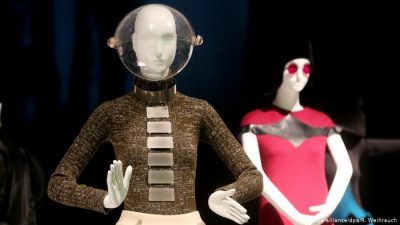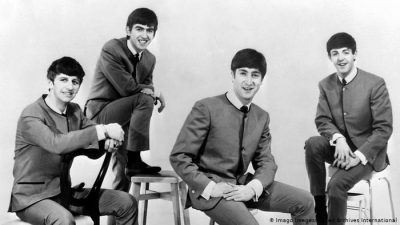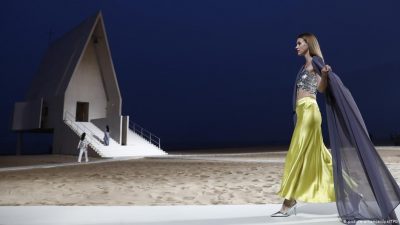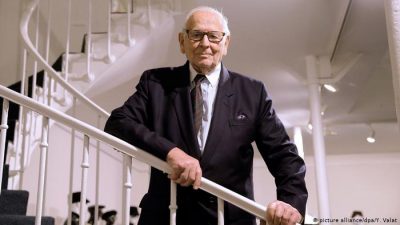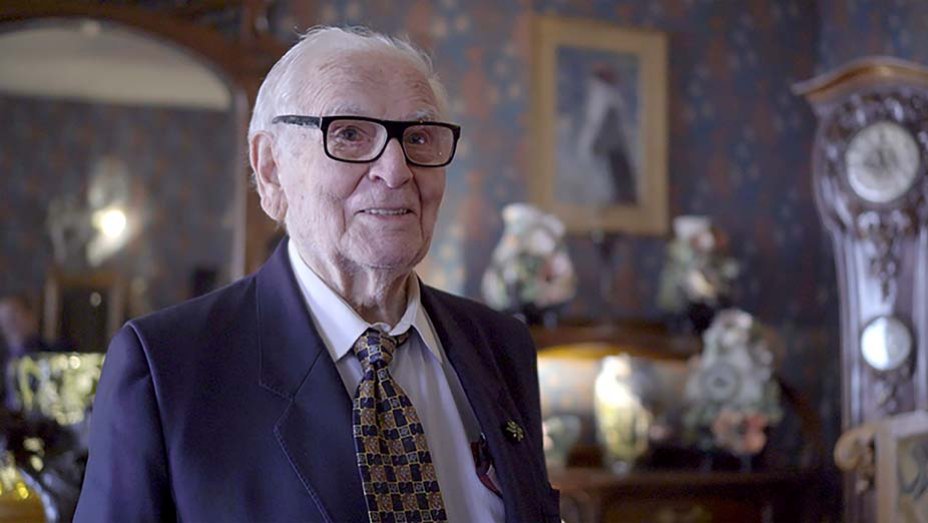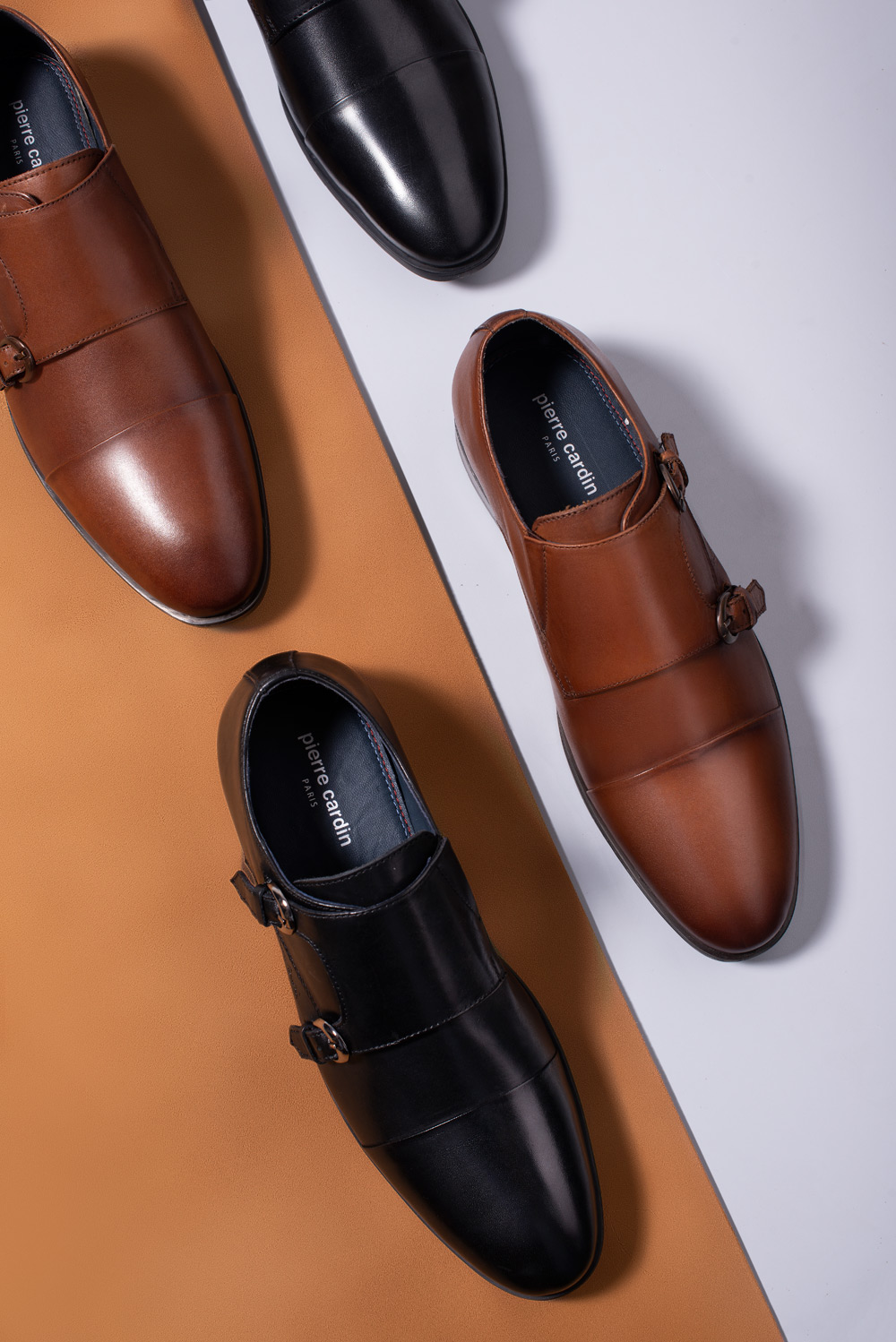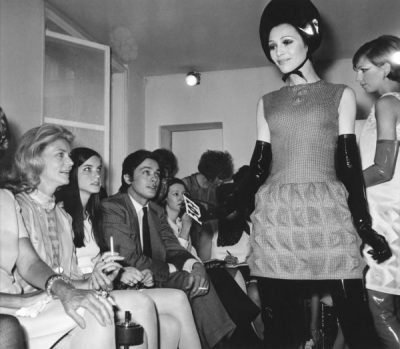Directors P. David Ebersole and Todd Hughes (‘Mansfield 66/67’) dig into the world of French fashion and design icon Pierre Cardin.
The best documentaries about haute-couture icons, like Valentino: The Last Emperor or last year’s McQueen, combine breathtaking footage of the portrayed designer’s work with a keen sense of who they were as an individual and how they changed their industry. On those terms, House of Cardin, from U.S. directorial duo P. David Ebersole and Todd Hughes (Mansfield 66/67), is a success. It premiered in the independent Giornate degli Autori section of the recent Venice fest and should see interest from festivals, broadcasters, and VOD platforms.
Pierre Cardin, born Pietro Cardin in the countryside near Venice in 1922, grew up in France and has become one of that country’s most iconic designers. The film traces his career from his first steps as an employee at Paquin in Paris in 1945, where he was put to work on the exquisite costumes of Jean Cocteau’s classic Beauty and the Beast, to becoming the head of Christian Dior’s atelier and then founding his own eponymous house in 1950.
Through a terrific combination of archival footage and talking-head interviews, Ebersole and Hughes suggest something of the creative genius of Cardin, who freed women from the tyranny of figure-hugging clothes and corsets and whose new ideas about shapes, tissues and colors are still taught in schools today (students at a fashion school in Asia study Cardin during their first year, as shown here).
A lot of his futuristic work from the 1960s and 1970s still looks strikingly modern today and anyone with a passing interest in fashion will recognize quite a lot of what is on display here, though it’s still a thrill to see the stunning range of output over the course of his decades-long career. The filmmakers themselves seem so in thrall of a particular shot of a Chinese model in a white dress with a mile-long crimson red train that unfurls over the top of the Great Wall of China as she moves forward — it is indeed a mouth-agape moment — that they include it in the film several times.
What is perhaps most startling to discover for the regular viewer is how much the global fashion brands of today, such as Louis Vuitton, Dior or Saint Laurent, owe to Cardin as a person and a brand. As the documentary suggests, he was the very first to branch out from haute couture into ready-to-wear — in 1959 he was even thrown out of the French federation for haute couture when he decided to make designer dresses on a budget for the mass market — and also into things such as perfumes, (sun)glasses and ties. Of course, this is how all of the big brands make most of their money nowadays and in retrospect his expulsion seems almost quaint.
Cardin was also the first to branch out internationally, traveling to Japan, China and Russia when those markets were hardly open to any products from the West, so in a way he is not only the father of his own House and of big-brand ready-to-wear items, but also the grandfather of the global fashion world we live in today.
Unlike all the other designers, Cardin, who is now 97, never sold his company to a big conglomerate. A lot of the money he made was invested in new adventures — furniture design, cars, you name it — and in the arts. In 1970, he opened Espace Cardin, a theatre in the former Cafe des Ambassadeurs in Paris, where avant-garde theater and music was programmed. Cardin himself calls them “the authors of tomorrow,” referring to the playwrights, though he might as well have been talking about interviewee Alice Cooper, who also played on the Espace Cardin stage.
In his own theater, Cardin also discovered Gerard Depardieu, who was a stagehand, and told him to get onstage. In 1980, the designer bought the famous restaurant Maxim’s, after having been turned away once for not wearing the proper attire 20 years earlier as Jean-Paul Gaultier recounts here, and turned it into a franchise. And in 2001 he bought the Chateau Lacoste in the Vaucluse region, which housed the Marquis de Sade for several years, and started a much-respected musical drama festival in its stone quarry.
Like the helping hand Cardin got from Dior when he started out, Cardin has in turn become a mentor to many now-famous names, including the aforementioned Gaultier and Philippe Starck, who also appears as a talking head alongside such names as Jean-Michel Jarre and Dionne Warwick, who wore Cardin on the cover of her Make Way for Dionne Warwick album. Sharon Stone and Naomi Campbell also sing his praises, with Campbell underlining the importance of Cardin having women of color on his catwalks years before anyone else did. Indeed, the film appropriately pays homage to Cardin’s face of the 1960s, Japanese model Hiroko Matsumoto.
The footage of Cardin in the present sadly doesn’t amount to much more than a few soundbites and there is a sense that this project represents a bit of a missed opportunity to have this grand monsieur de la mode reflect on his life, work and career in a way that digs a bit deeper. Cardin certainly seems to enjoy being feted everywhere he goes and seen his achievements, that is very much deserved. But it’s a shame editors Mel Mel Sukekawa-Mooring and Brad Comfort have to rely on juicier interviews from yesteryear to shed more light on who the man behind the famous name and signature really was and what drives — or at least drove — him. That said, their cutting is judicious and well-paced throughout, organizing information in thematic blocks while following a roughly chronological order.
The one subject the film doesn’t quite get a handle on is Cardin’s love life, even if it does dedicate some time to both Jeanne Moreau and Andre Oliver, who seem to have been his most important amoureux. Several people from Cardin’s inner circle are interviewed, including his nephew, Rodrigo Basilicati Cardin, the brand’s artistic director; Maryse Gaspard, the director of haute couture; and Renee Taponier, the curator of the Cardin museum. But they either stay mum or only very shyly broach the subject, so the timeline and what exactly happened with Moreau and Oliver — who, it seems, must have overlapped as lovers — remains rather vague. Perhaps, after two fiction films about Yves Saint Laurent, a French director could help figure out what went down between these icons. In archive footage, Cardin suggests that it was actually helpful that Moreau was an icon as well, so they could both leave their public image at the door, the kind of fascinating insight that makes you want to know more about the relationship they had.
Overall, however, this is a deliciously entertaining and perceptive take on Cardin’s life and how he shaped both the silhouette of fashion and branding in the fashion world and beyond. James Peter Moffatt’s pumping score adds a runway vibe that helps keep things lively and moving.
Venue: Venice Film Festival (Giornate degli autori)
Production company: Ebersole Hughes Company
Directors: P. David Ebersole, Todd Hughes
Producers: P. David Ebersole, Todd Hughes, Cori Coppola
Executive producers: Margret Raven, Matthew Gonder
Cinematography: Laurent King
Editing: Mel Mel Sukekawa-Mooring, Brad Comfort
Music: James Peter Moffatt
Sales: Doc & Film International
In French, English, Italian, Chinese, Japanese
97 minutes
(Source:- hollywoodreporter.com)






